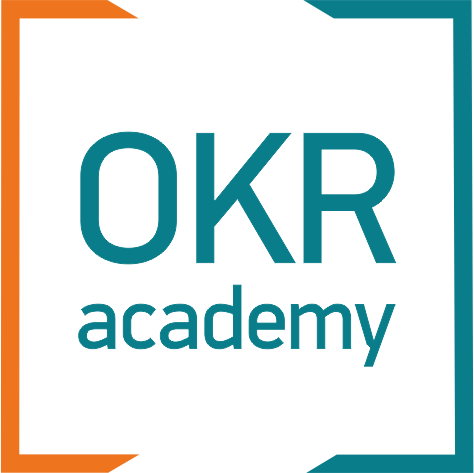ExO - Exponential Organizations
OKR for ExO: Driving Growth and Innovation
Experience a concise overview and key takeaways from a workshop I led, tailored for the ExO community, right here in this collection of abstracts and slides. Want the full recording or eager to engage in future workshops on fostering exponential organizations? Be sure to join us!
Exponential Organizations (ExOs) are companies that leverage emerging technologies and innovative business models to achieve rapid growth and impact. These organizations operate differently from traditional companies by relying on decentralized decision-making, agile practices, and a focus on purpose-driven innovation.
Read the book for details
Read the book for details

OKR is a strategic execution framework that empowers organizations and teams with flexibility, adaptability, which means agility, focus, and alignment to drive progress toward clear and ambitious objectives and key results.
It is also a continuous discipline and communication culture that encourages employees to be actively involved in setting goals, measuring progress, celebrating success and learning from lessons.
It is also a continuous discipline and communication culture that encourages employees to be actively involved in setting goals, measuring progress, celebrating success and learning from lessons.
OKRs can benefit ExOs by providing a clear framework for aligning the organization around key objectives, prioritizing tasks and initiatives, and measuring progress toward those goals. OKRs can help ExOs stay agile and adaptive in the face of rapidly changing market conditions and emerging technologies, allowing them to achieve their goals more efficiently and effectively.

OKR as a system, as a framework, provides the implementation of internal ExO attributes (IDEAS), and for external attributes (as well as for all others), you can use OKR to set goals for the development of these attributes.
Below I will give some examples of how OKR provides the implementation of internal ExO attributes.
Below I will give some examples of how OKR provides the implementation of internal ExO attributes.


Every successful business has two directions - Business as Usual, which gives it stability and predictability, something that is managed by regular management, KPI
And the second direction is the changes that bring us closer to the realization of the Massive Transformative Purpose. Since this is an area of high uncertainty, traditional management is not effective here.
And OKR appeared precisely to manage changes in the mode of strategic experiments.
OKR is needed to manage strategic change. Not to control business as usual
And the second direction is the changes that bring us closer to the realization of the Massive Transformative Purpose. Since this is an area of high uncertainty, traditional management is not effective here.
And OKR appeared precisely to manage changes in the mode of strategic experiments.
OKR is needed to manage strategic change. Not to control business as usual

In OKR, dashboards are transparent and accessible to all employees involved in OKR. So, teams can see company-level OKRs and each others.
For ExOs, dashboards are internal and external presentations of real-time information you need to run your business.
BUT In OKR, we are not focusing on all metrics, but only on the crucial ones that we decided to significantly change or even disrupt in this period.
We use these metrics as Key Results to measure progress towards our Objectives
For ExOs, dashboards are internal and external presentations of real-time information you need to run your business.
BUT In OKR, we are not focusing on all metrics, but only on the crucial ones that we decided to significantly change or even disrupt in this period.
We use these metrics as Key Results to measure progress towards our Objectives

OKR, when applied properly, develops and maintains initiative, responsibility, and team autonomy.
Company OKRs established not only by CEO, but by a group of 5-20 members of the leadership team and some key employees
Team’s OKRs established by the teams themselves
and aligned
vertically - with MTP, Strategic goal and Company OKRs
horizontally - with other teams
All OKRs are listed on a common dashboard accessible to everyone. And this also includes social technology - when everyone sees the goals and the real achievements or failures of everyone, this triggers social motivation.
It is important that in OKR there is no competition and punishment for a mistake - and in case of failure, other teams support them.
Company OKRs established not only by CEO, but by a group of 5-20 members of the leadership team and some key employees
Team’s OKRs established by the teams themselves
and aligned
vertically - with MTP, Strategic goal and Company OKRs
horizontally - with other teams
All OKRs are listed on a common dashboard accessible to everyone. And this also includes social technology - when everyone sees the goals and the real achievements or failures of everyone, this triggers social motivation.
It is important that in OKR there is no competition and punishment for a mistake - and in case of failure, other teams support them.

OKRs can be a powerful tool for accelerating the SCALE attributes of Exponential Organizations (ExOs). Here are some ways to use OKRs to accelerate each attribute:
Staff on Demand: Use OKRs to set goals for hiring and onboarding staff in a way that is aligned with the organization's overall objectives. This can help ExOs quickly scale up or down as needed to meet changing market conditions.
Staff on Demand: Use OKRs to set goals for hiring and onboarding staff in a way that is aligned with the organization's overall objectives. This can help ExOs quickly scale up or down as needed to meet changing market conditions.
Example of SCALE OKRs: Staff on Demand
Objective: Craft a flexible talent network
Key Results:
Key Results:
- Grow dynamic talent pool by 50% by infusing more freelancers and contractors
- Cut critical role filling time by 25%.
- Enabling 20% of the current workforce to operate in diverse roles and reducing external hiring needs by initiating cross-functional skill program.
Community & Crowd: Establish OKRs that focus on engaging and growing the community around the organization. This can include objectives around increasing user engagement, growing the number of contributors, or expanding into new geographic regions.
Example of SCALE OKRs: Community and Crowd
Objective: Foster a vibrant user community
Key Results:
Key Results:
- Increase the number of active users in our online community platform by 50%.
- Ignite 10,000 social buzz through a novel user-content campaign.
- Recruit and onboard 10 new contributors to our open-source project.
- Engage more than 500 attendees by hosting at least 3 virtual or in-person community events.
- Establish a 'Community Champions' program, celebrating and leveraging our most influential and active users (milestone metric)
Algorithms: Use OKRs to set goals for improving and optimizing the algorithms and technology that power the organization. This can include objectives around improving user experience, increasing efficiency, or developing new products or services.
Leveraged Assets: Establish OKRs that focus on leveraging existing assets to generate new revenue streams or expand into new markets. This can include objectives around developing partnerships, creating new products or services, or acquiring new businesses.
Engagement: Use OKRs to set goals for improving employee engagement and fostering a culture of innovation within the organization. This can include objectives around improving employee satisfaction, increasing collaboration, or developing new training and development programs.
Leveraged Assets: Establish OKRs that focus on leveraging existing assets to generate new revenue streams or expand into new markets. This can include objectives around developing partnerships, creating new products or services, or acquiring new businesses.
Engagement: Use OKRs to set goals for improving employee engagement and fostering a culture of innovation within the organization. This can include objectives around improving employee satisfaction, increasing collaboration, or developing new training and development programs.
Example of SCALE OKRs: Engagement
Objective: Ignite decentralized platform engagement
Key Results:
Key Results:
- Boost active user involvement in governance decisions from 5% to 25%.
- Elevate user-generated content contributions by 10% per active user per week.
- Drive a 20% rise in active user interactions via platform's communication features.
Discover Your Organization's Exponential Readiness
Determine the extent of your organization's exponential capabilities and identify areas for enhancement.
Dive into our Exponential Quotient (ExQ) survey now!
Dive into our Exponential Quotient (ExQ) survey now!
